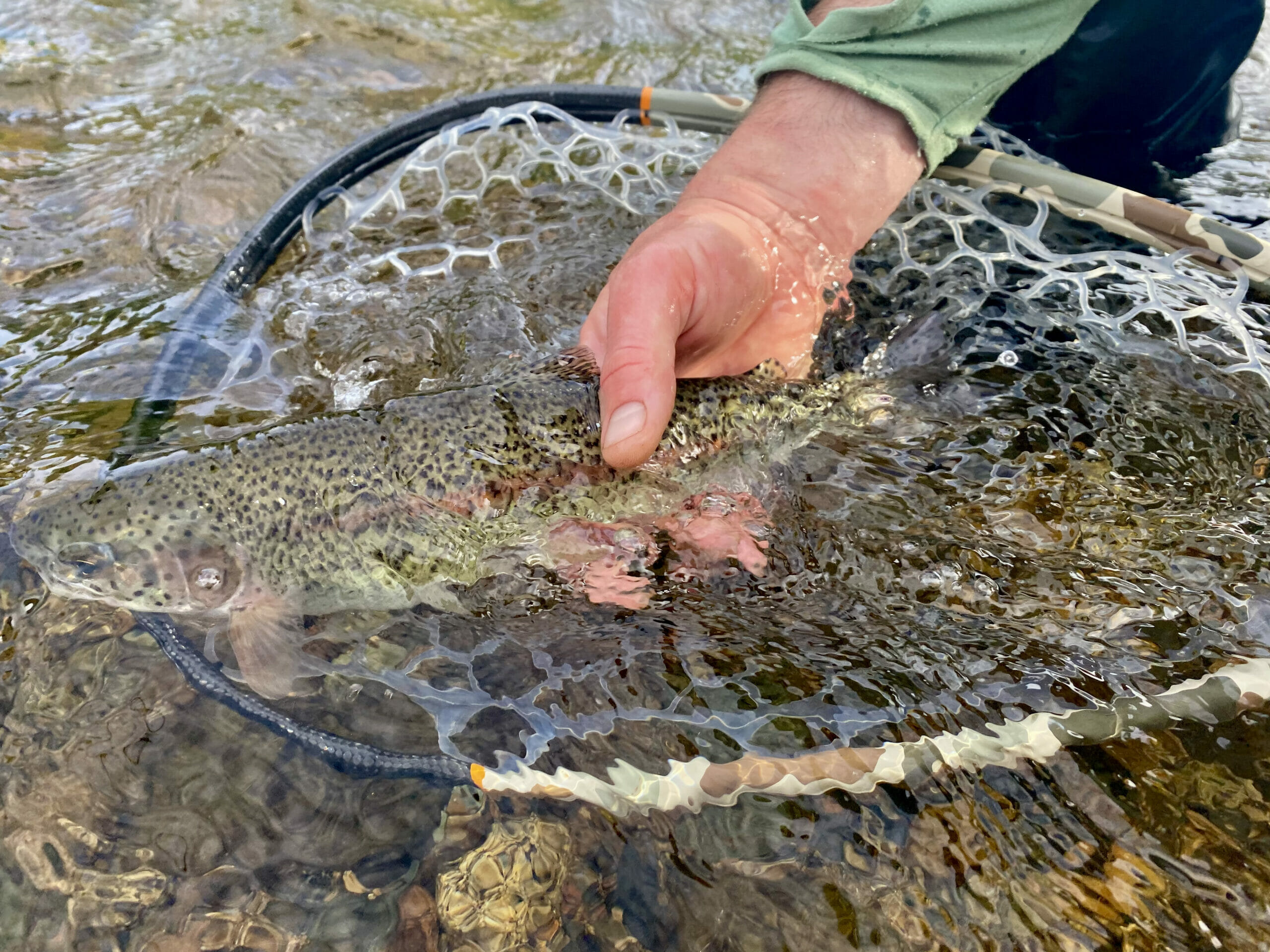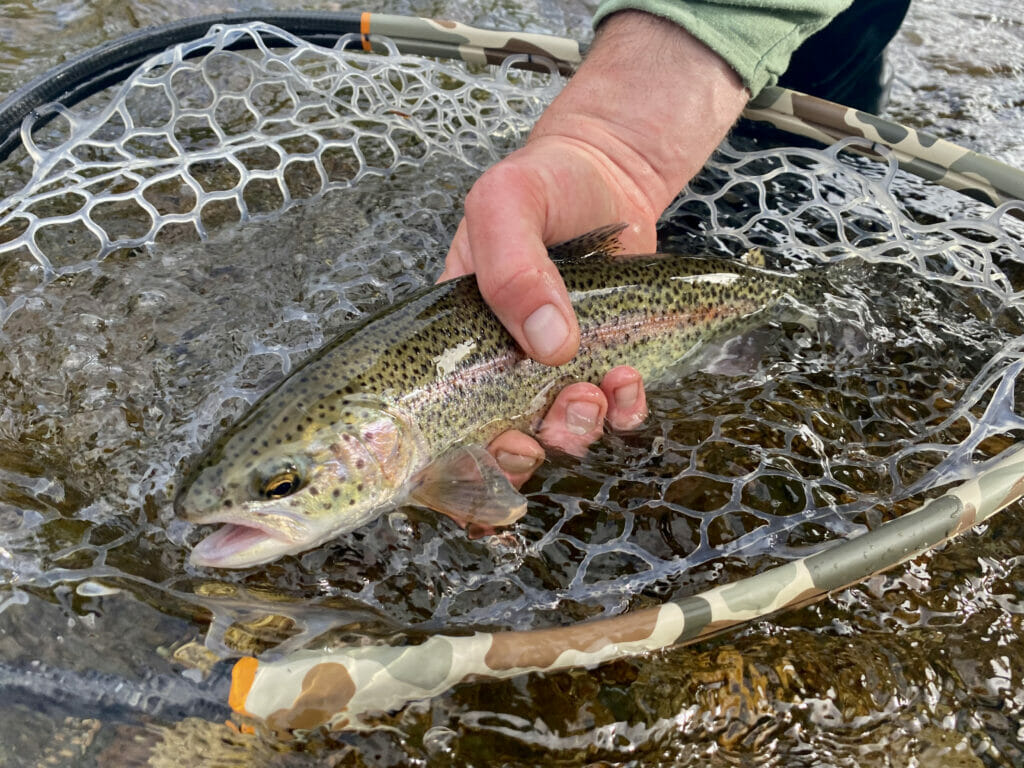An Alaskan rainbow trout prepares to swim away after being caught on a tributary to the Susitna River in Alaska. Daniel A. Ritz photo.
Western Native Trout Challenge: Alaskan rainbow trout
Daniel Ritz is fishing across the Western United States this summer in an attempt to reach the Master Caster class of the Western Native Trout Challenge, attempting to land each of the 20 native trout species in their historical ranges of the 12 states in the West. You can follow Ritz as he travels across the West by following Trout Unlimited, Orvis, Western Native Trout Challenge and Montana Fly Company on social media using the #WesternTroutChallenge.
Locals and Alaskan Railroad staff referred to the trip from Fairbanks to Talkeetna as “the Jurassic Park” ride. I had plenty of time to ponder this description during the 8-hour journey. I stared out the window at the never-ending swaths of permafrost-rooted birch trees. Eventually the landscape morphed into the more familiar and comforting spruces of south-central Alaska.
I was looking forward to my stay in Talkeetna and fishing for Alaskan rainbow trout along a number of tributaries of the 313-mile Susitna River as much as any other species I’d come to the state to fish for as part of the Western Native Trout Challenge.

I would quickly learn people don’t bother mentioning their rainbow trout catch until the fish approach the 30-inch mark.
Arriving at the train station, I stretched my legs as hordes of Denali climbers and tourists climbed into their previously scheduled taxis, motorcoaches and buses. In what seemed like a matter of only minutes, I was alone in the parking lot of the Talkeetna Train Depot. A local pilot pointed and told me that the town was two miles “that-away.” The walk wasn’t as bad as I imagined.
Almost immediately after setting up camp on the shores of the metallic blue-tinted Susitna River, it proceeded to rain for two consecutive days as I anxiously awaited my jet-boat trip up the river to a tributary I had been assured would be stacked with rainbows.
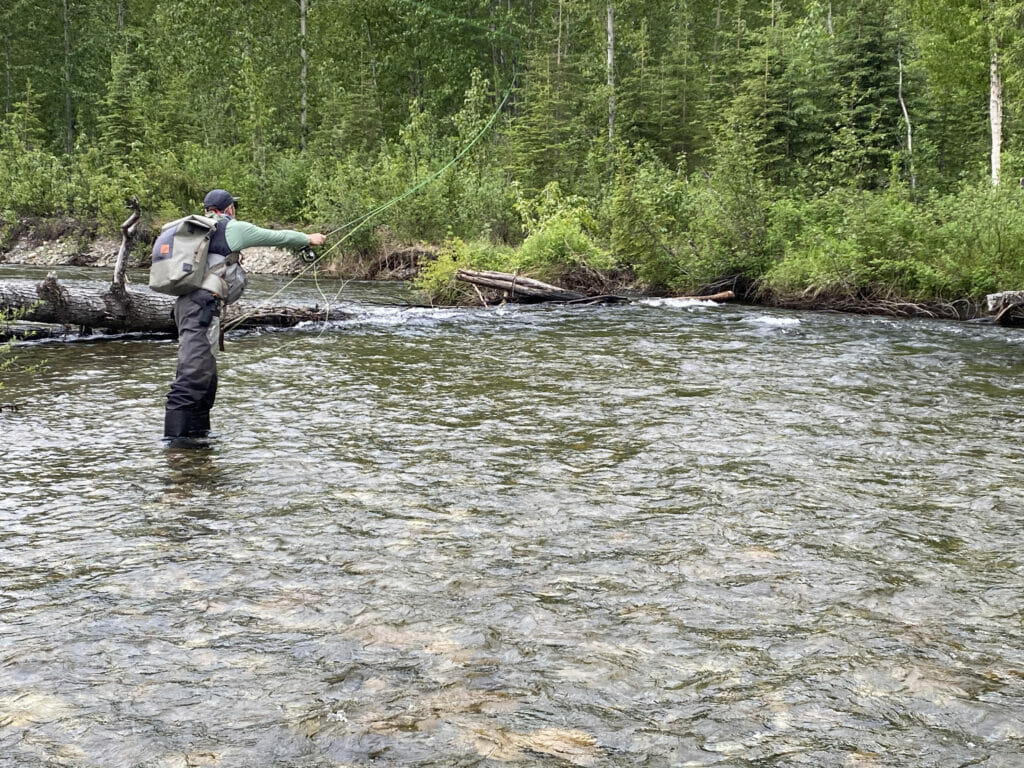
“Let’s just say If I could take time off work for myself and go fishing, anywhere, I’d go there the time you’ll be there,” Alaska Department of Fish and Game’s Ryan Ragan told me during a phone call before the trip. “Bring mouse patterns. You’ll want them.”
The day arrived when I was to head upriver to be dropped off and left from 11 a.m. until I was picked up at 7 p.m. I woke up early, carefully packed my bag and reviewed my bear species identification tactics and safety protocols.
Then, the phone rang. My charter boat was calling to check on my drop-off reservation. They also wanted to let me know that I was now the only person headed upriver that day.
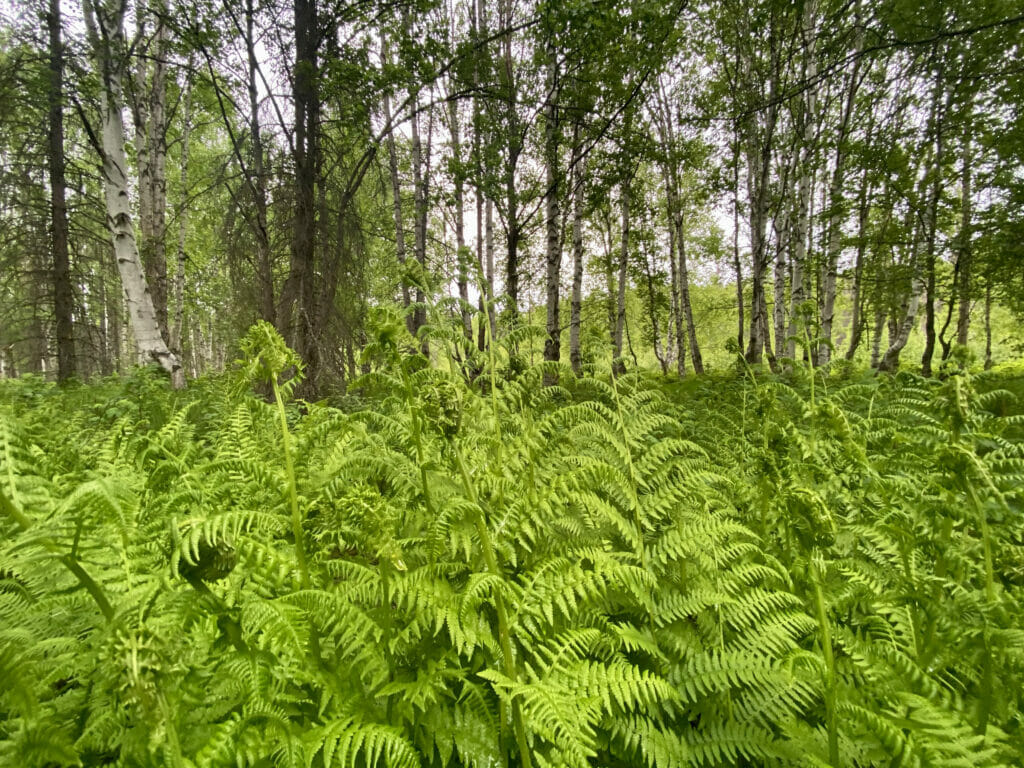
Normally very comfortable by myself in the backcountry, I also firmly understood the land outside Denali National Park and Talkeetna to be proper grizzly country. My mind raced: by myself — and with very little experience in high-density bear country. Not to mention high fish counts and the possibility of the salmon run beginning for the season. This is, as they say, what “asking for it” looks like.
It is normally said to sound dramatic and add flair, but, the reality is, sometimes it’s true. There would be no one to hear me scream.
I was faced with the kind of mistake you don’t get to make twice. I called my charter and told them I was not comfortable out there completely by myself.
“Don’t worry hon’, it happens with tourists all the time. Really. Don’t worry. It’s fine,” the voice on the other side of the call told me in what seemed like a carefully crafted, artisan dagger through my heart. They still thankfully provided a refund.
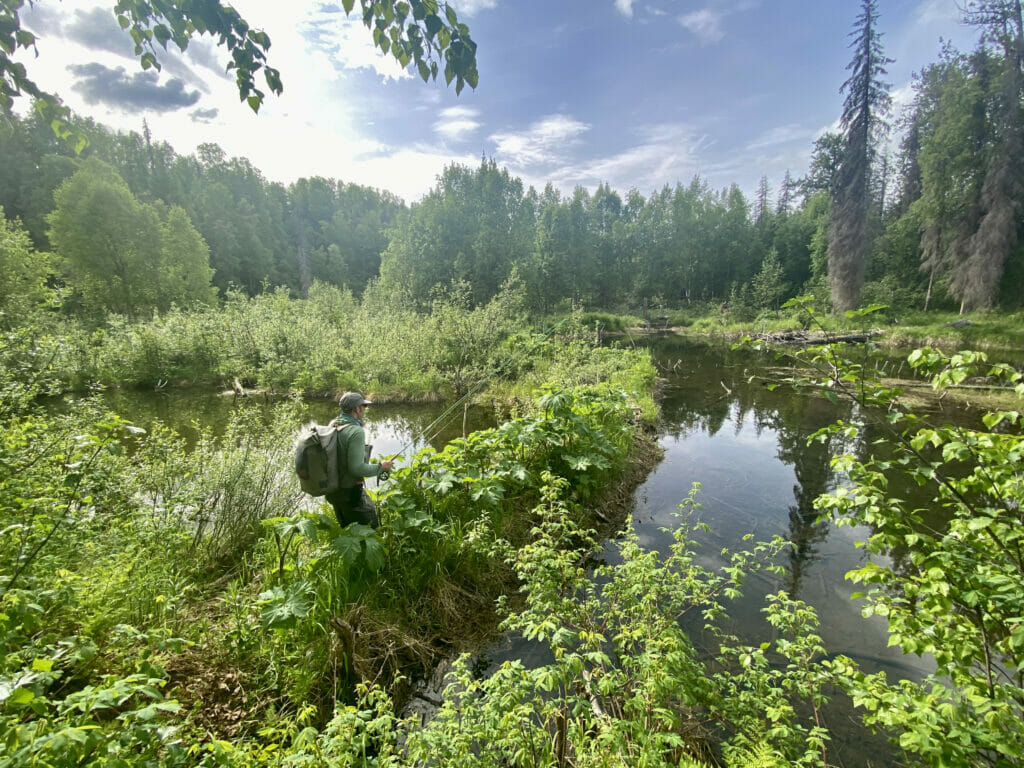
Later that day, I was joined at camp by Eric Booton of Trout Unlimited Alaska (TU Alaska). Eric is the sportfish outreach coordinator for TU Alaska and was widely advertised as one of the most passionate anglers and enthusiastic conservationists around.
“When I find myself getting jaded, which I am admittedly guilty of on occasion after doing this for decades, Eric reminds me of why I do it,” Mark Hieronymus, also of TU Alaska, had told me weeks before. “When I get frustrated, which happens when you’ve been doing this as long as I have, Eric’s one of the people that fires me up.”
Right on cue, Eric revealed how he earned his reputation.
“I mean, if you want to go now, I’m down to go now,” he said, minutes after arrival at my riverside camp, as if he had been waiting to ask all along.
After being socked in for a few days and the self-loathing strong within myself for canceling a lifetime opportunity, I was chomping at the bit to wet a line.
Booton, his dog Brooke and I decided to wade the lower section of a well-known Susitna tributary south of Talkeetna that’s known for early salmon runs as well as healthy populations of eager rainbows.
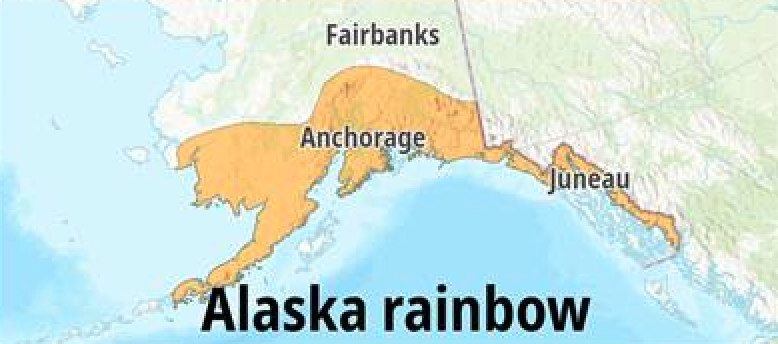
We were a bit shocked to struggle along a few picture-perfect holes and textbook log jams.
I swung streamers, as stripping a mouse pattern was still an admittedly alien concept to me. I wanted to feel confident I was giving myself the best chances. I decided it was best to wait for the nod from a local before tying a mammal imitation on the line.
A few fishless holes later, with the Alaskan summer sun finally beginning to sink behind the hills to the west, I tied on a mouse pattern as we approached what Booton described as a perfect “mousin’ log”.
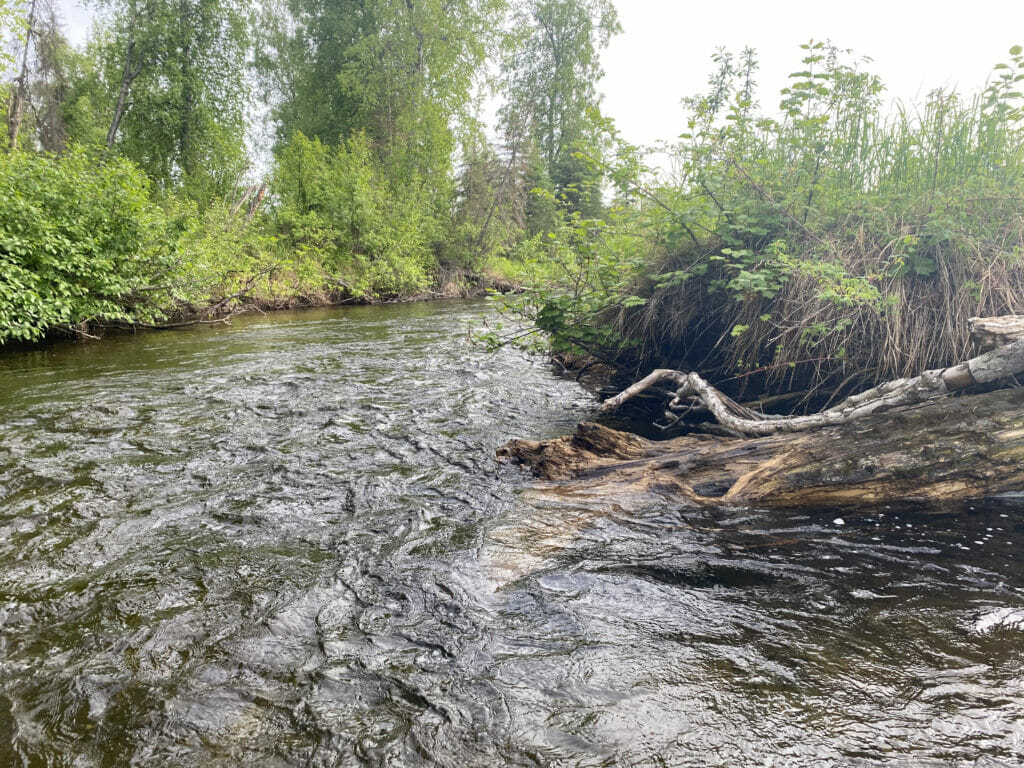
“Hit it off the log, let it drop, and rip it like it’s swimming across the river and stuck in the current,” Booton advised in what might as well have been ancient angling Latin.
First cast. Plop! The mouse pattern with a trailing hook tied on a loop behind the body landed below the log and I began to strip across the corner of the river.
I barely saw it. A fish, the kind that you only know by a flash of silver, hit the mouse and dragged the hapless pattern under the water. I pulled tight.
Without hesitation or occasion, the fish, easily 20-plus inches, darted beneath the log jam and I felt my line go slack as it broke off the fly.
“What was that!?” I laughed, not entirely sure what had just happened.
“That was your rainbow,” he responded with a smirk.
The next morning, we broke camp early in order to work a small creek Booton enjoys south of Talkeetna. One absolutely picture-perfect hole, bend, run, seam and drop-off after another we were disappointed not to come across any evidence of fish.
We were stumped.
Later, we found ourselves at a lefthand bend with a dramatic gravel bar drop off into a deep hole and a trout came to play. When I slid my last full-sized Dolly Llama underneath an overhanging branch and a formidable rainbow erupted from underneath the root of the tree, engulfed the streamer and immediately dashed back to its cover, easily breaking off what I would have considered overkill rigging.
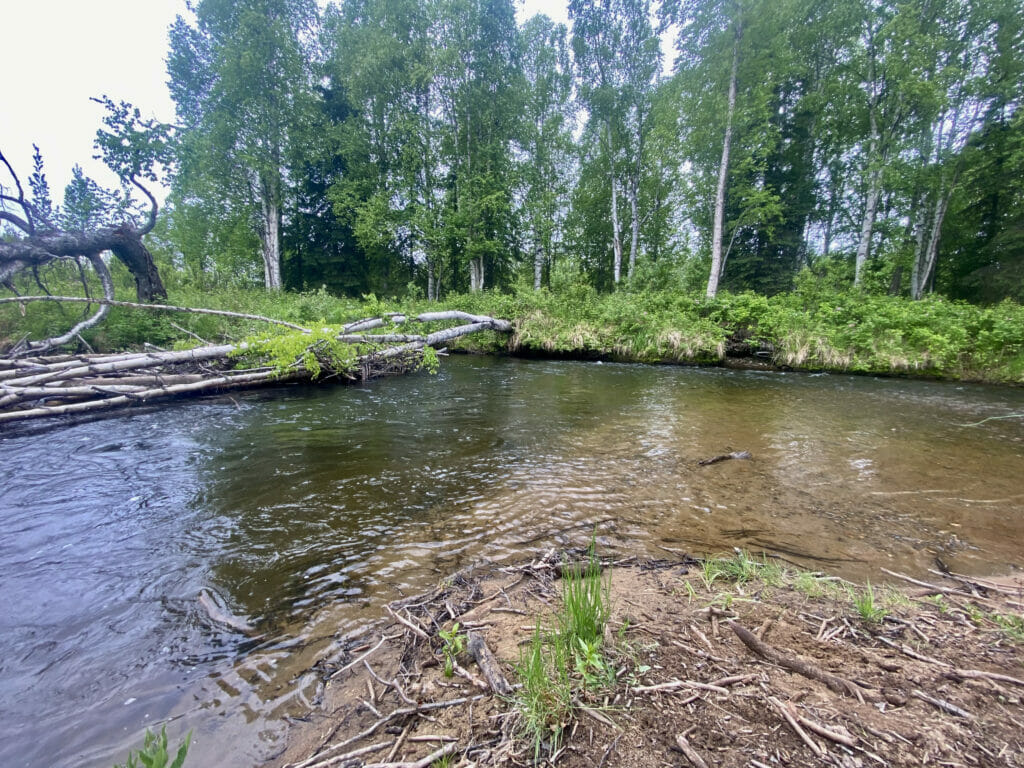
At this point, I was exasperated. Not only had I not lost fish like this in years, this species was beginning to become expensive.
We were confident this hole was rich with fish and proceeded to try everything we could think of. Still, the dastardly Alaskan rainbows continued to taunt us all morning. One after another they would dart from their camouflage cover, only emerging for the most appealing of passes, before either taking and running off with or sampling and then kindly disposing of our hooks.
After dissecting this heavenly stretch of river with little success, Booton suggested a home-made fry fish imitation; and encouraged me to sink it through the drop-off into the major hole of the bend.
Finally, a native Alaskan rainbow was on and, more importantly, remained on the line. It made maybe a half dozen passes through the hole and no less than four jumps before coming to the net.
I gasped as Booton netted the fish, amazed to see a picture-perfect, but just 12-inch-long Alaskan rainbow trout attached to the fry imitation.
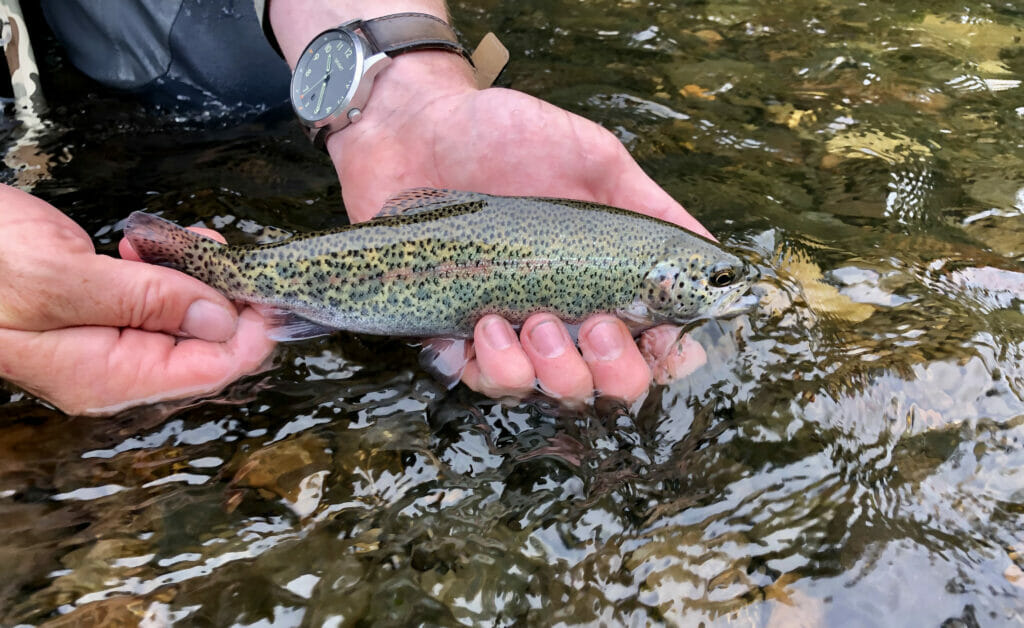
Dark, defined spots along it’s back accented the most stand-out feature, it’s particularly bright pink lateral stripe. The stripe really stood out to me. Having brought many rainbow trout to hand, I had certainly never experienced one with a band that shade of pink. It was if everything was more defined, the spots crisper and eyes clearer.
“If it was easy,” Booton exclaimed with a smile in his usual standard slightly frustrating positivity, ”then they wouldn’t be wild.”
We fished for 14-hours that day, first at a small creek of the Sustitna and then at a fork of another tributary that Booton had not previously explored.
Hosting one of the widespread and healthiest populations in Alaska, Alaska Department of Fish and Game regards rainbow trout populations as healthy and management practices successful.
“The biggest threat to rainbow and steelhead trout in Alaska is the degradation of their native habitat caused by human interactions and development including: urbanization, roads, hydroelectric projects, timber harvest, mining projects, and loss of wetlands,” reads the report.
We did land our share of rainbows throughout the day, yet, I couldn’t help but remain focused on how different these powerful native Alaskan rainbows were from the stocked rainbows I regularly catch with relative ease at home in Idaho. These were beautiful, powerful and smart, where as the stocked often sterile rainbows at home are blandly colored, often misshapen and, even more often, the first generation hatchery rainbows is embarrassingly stupid.
Around one of the last bends on a fork of Montana Creek late in the evening of our marathon fishing day, Booton insisted that I tie on a mouse pattern.
“You can hit it,” he said. ”Let it land on the log, let it slide off, then rip it up the seam.”
I did, and to my surprise, a trout with a mouth roughly the size of my closed fist breached the surface and devoured the mouse.
Excitedly, too excitedly, I ripped the mouse from the trout’s mouth before it decided that the mouse was more trouble than it was worth and could not be convinced to poke its head out again.
The point had been made.
While I never landed anything close to the 30 inch-plus rainbow I fantasized about, I felt as if my time with Booton on the tributaries of the Susitna offered me an insight into the nature of truly wild fish.
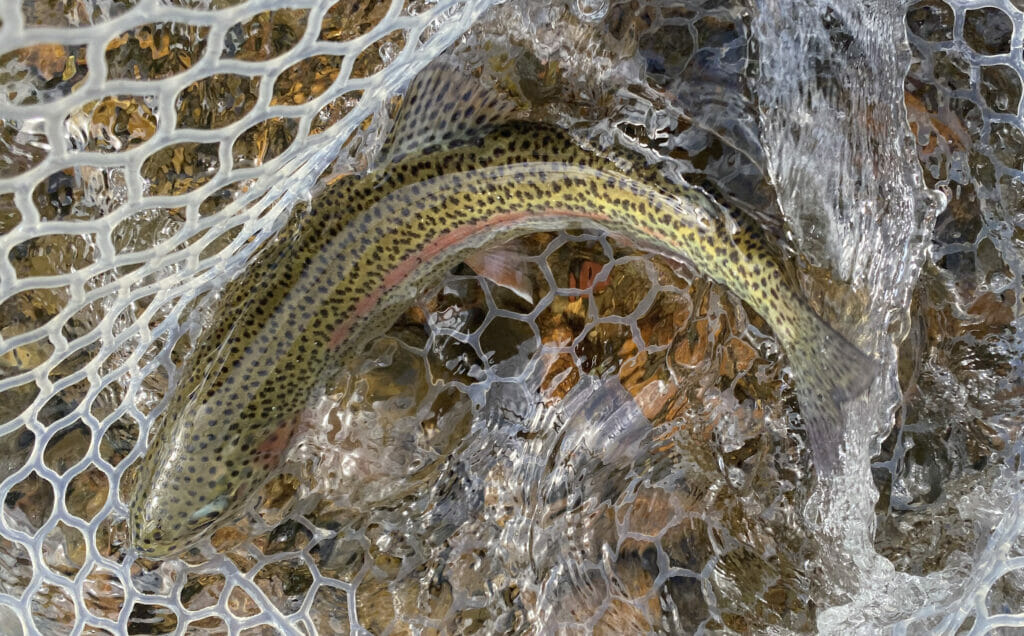
Alaska Department of Fish and Game states, “One of the goals of the Division of Sport Fish is to conserve naturally reproducing populations of fish. All hatchery operations in the state must comply with strict regulations and procedures designed to meet this goal, so that wild fish and hatchery fish do not compete to their mutual detriment for the same resources.”
My previous relationship with stocked rainbow trout in Idaho and across the West where rainbow trout have been planted had set me up to expect a slamdunk. While the nature of wild fish existed as a framework and in concept, this was by far the closest thing to an A-B testing comparison I had ever made.
While I certainly aim to go back to Alaska one day to encounter the kind of Alaskan rainbows I see in my mind’s eye, I am grateful for my time and the miles covered to experience even a few of these pristine specimens.
It is my humble opinion that as anglers and as a culture at large, we don’t need more things to be easy and dependable. Deep in the forests of south-central Alaska, I felt lucky to intersect and be awakened by something in its truly wild form the way someone with a lifelong history with house cats would be awakened by meeting a tiger.
As it is, the choice to keep Alaska rainbow trout populations healthy in Alaska is largely up to us.
“Throughout much of the native range of rainbow trout, human development has been the primary obstacle to population viability by reducing the amount of available habitat, decreased connectivity, and impeding fish passage along migration routes. Maintaining sufficient genetic variability of rainbow trout populations in Alaska is crucial to maintaining their diverse life histories,” a Species Status Review by the Western Native Trout Initiative states.
Like potentially surprising that grizzly bear deep in the forest by yourself, I believe that could also be called a mistake we won’t get to make twice.



